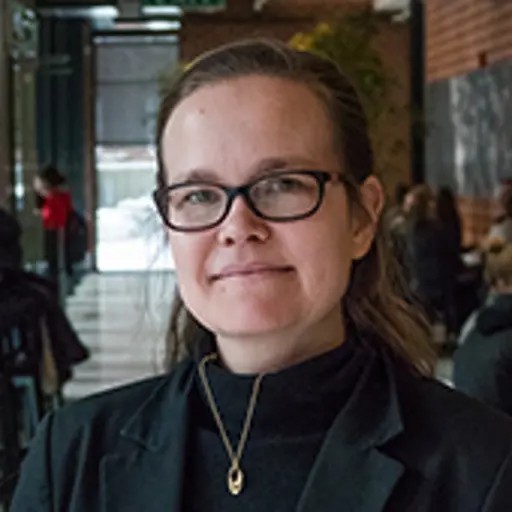The Swedish Research Council's research grant in science and technology (2021 - 2025), was announced recently. Five researchers from the Department of Chemistry and Chemical Engineering managed to succeed in the competition and was granted in total 18 million sek.
Historically, the department's researchers have done well in obtaining grants from the Swedish Research Council and have now repeated the achievement.
“We have cutting-edge research in several areas at the department, and this shows, not least, in the grants from VR. It is of course very important and joyful for both the researchers and the department that we get these grants. It is proof that our research is relating to current issues and maintains the high quality we strive for”, says Hanna Härelind, Head of the Department of Chemistry and Chemical Engineering at Chalmers University of Technology.
The research and projects that was granted covers a broad field. They are described briefly beneath by the respective research leaders.
Chemical recycling of polyurethane plastics with reductive deployment using heterogeneous catalysis
“This project focuses on chemical recycling of plastics. It is of great interest to find a mild chemical recycling process for plastics where monomers can be re-produced and used to produce new plastics of the same quality. The aim for this project is to develop heterogeneous catalysts for the depolymerization of plastics to enable a closed chemical recovery”

- Head of Division, Chemical Engineering, Chemistry and Chemical Engineering
Thermal quenching of luminescence in hybrid organic-inorganic perovskites. - Neutron scattering studies of the effect of organic cation dynamics
“Hybrid organic-inorganic perovskites are luminescent materials promising for use both in solar cells and in light emitting diodes, but substantial energy losses due to thermal quenching of luminescence, which is manifested as a decrease in the intensity of the luminescence with increasing temperature, limits their use in practical devices.
In this project, we will investigate the nature and role of organic cation dynamics on thermal quenching of luminescence in these materials. The primary tools to this end will involve a mixture of inelastic neutron scattering and mode-selective vibrational excitation techniques, available at international large-scale facilities, and optical techniques at Chalmers. Besides being of considerable fundamental interest, the new understanding of the relationship between organic cation dynamics and luminescence may help to develop design principles for new, more efficient hybrid organic-inorganic perovskites, with a view towards their application in technological devices.”

- Full Professor, Energy and Materials, Chemistry and Chemical Engineering
Molecular Photoswitches for Fluorescence Microscopy Beyond the Resolution Limit
“Multi-photon microscopy has many applications, for example in disease diagnosis. Due to technical limitations, multi-photon microscopy is for most users limited to two-photon absorption, although many applications would substantially benefit from the use of more than two photons in the excitation process (three and four). In this project, which is now receiving support from the Swedish Research Council, we will investigate the possibility of building molecules that are excited via two-photon absorption, but show all the benefits that are obtained with four-photon excitation.”
- Full Professor, Chemistry and Biochemistry, Chemistry and Chemical Engineering
Artificial shuttle transport of proteins through nanopores
“This project aims to mimic the biological transport of molecules in and out of the cell nucleus. The aim is to create an artificial system that performs the same transport mechanism: selected molecules should be transported through small holes using a kind of "shuttle" that can move freely through the holes. Other molecules as well as molecules that are not linked to a shuttle should not be able to pass. Since this is basic research, it is difficult to say exactly what it may lead to, but it could be in biological sensors, for example, to detect rare molecules.”

- Full Professor, Applied Chemistry, Chemistry and Chemical Engineering
Endogenous natural fluorescence labeling of RNA and its use in cell imaging
“Our research group have developed a method to enzymatically, but outside the cell, produce visible RNA. The methodology enables RNA to be delivered into the cell by transfection or formulation into lipid nanoparticles and can be used, among other things, in studies of cell uptake of RNA-based drugs.
With this new grant, we aim to develop a similar methodology where the production of the emissive RNA takes place inside the cell by "feeding" the cells with emissive building blocks that we call FBAs - fluorescent base analogues. It would be the first methodology for producing such endogenous natural emissive RNA and it would make hitherto impossible microscopy studies of cell endogenous RNA possible and answer questions such as: how RNA is produced in the cell, how it is charged in compartments in the cell called extracellular vesicles (EVs) and with the help of EVs is transported out of the cell and how it is then delivered on to a recipient cell and used there. EVs promises to be a way in the future to deliver RNA-based drugs if, above all, the charging process can be made more efficient and, therefore, more understanding is needed about this entire EV-RNA process.”

- Full Professor, Chemistry and Biochemistry, Chemistry and Chemical Engineering